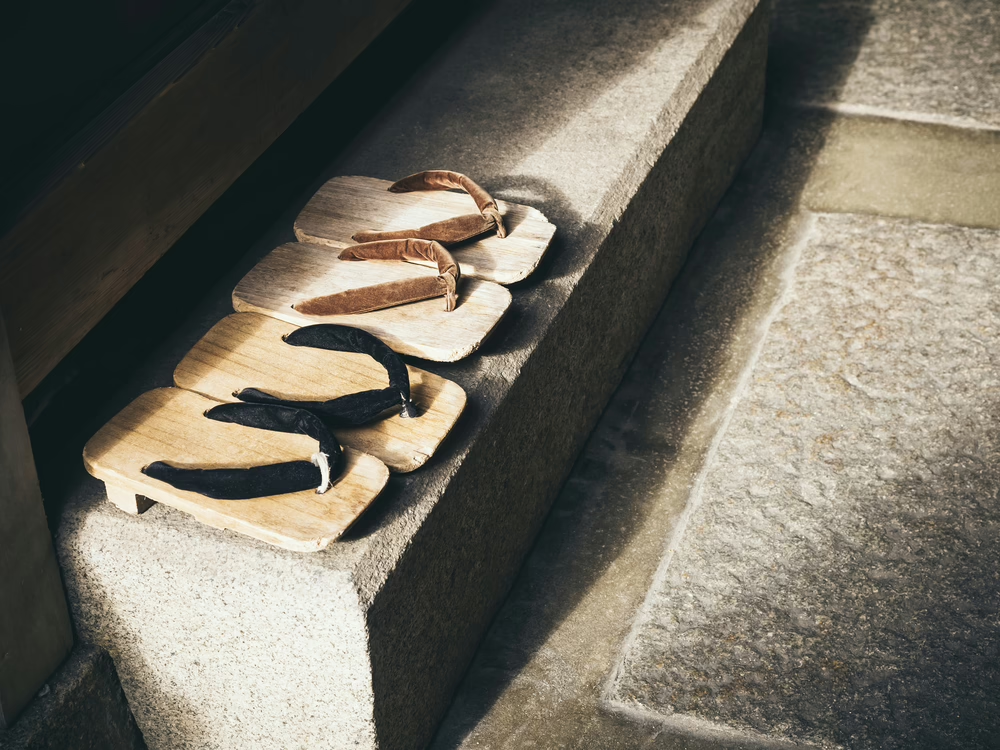Traditional Japanese spa treatments offer centuries-old healing wisdom through authentic onsen wellness practices through natural hot springs, therapeutic massage, and restorative wellness practices. Furthermore, from mineral-rich onsen waters to sacred shiatsu massage techniques, Japan’s onsen wellness culture provides authentic therapeutic benefits. These practices promote both physical healing and spiritual renewal. Additionally, experience the profound wellness traditions that have sustained Japanese longevity and vitality for over 1,300 years.

Japan’s traditional spa treatments extend far beyond simple relaxation. Instead, they represent a comprehensive approach to health that integrates physical therapy, mental restoration, and spiritual purification. Meanwhile, visitors seeking authentic wellness experiences can explore these healing traditions through detailed cultural exploration guides and culinary wellness experiences.
The Ancient History of Traditional Japanese Spa Treatments
Traditional Japanese spa treatments originated over 1,300 years ago, establishing the foundation for modern onsen wellness during the Nara period (710-794). During this time, natural hot springs were first recognized for their extraordinary healing properties. Initially, these treatments were developed as medical therapy for samurai warriors recovering from battle wounds. Later, they evolved into comprehensive wellness practices embraced by Japanese emperors and nobility.
The foundation of traditional Japanese spa treatments lies in the Buddhist and Shinto principles of purification, balance, and harmony with nature. Moreover, ancient texts document how these mineral-rich waters were considered sacred gifts from the earth. These waters possessed divine healing powers through traditional healing techniques that could restore both physical health and spiritual well-being. Additionally, visitors can explore more about these spiritual traditions and shrine practices throughout Japan.

Throughout Japanese history, traditional spa treatments served as essential healthcare. Consequently, dedicated healing centers were established around natural hot springs. Furthermore, the integration of massage techniques like shiatsu and anma further enhanced these therapeutic practices. This created the comprehensive onsen wellness system we experience today.
Essential Traditional Japanese Spa Treatments for Optimal Onsen Wellness
Onsen: The Foundation of Japanese Wellness Culture
Onsen represents the cornerstone of traditional Japanese spa treatments. These feature natural hot springs with specific mineral compositions and temperatures maintained at least 25°C. Additionally, with over 27,000 therapeutic hot springs Japan sources throughout the country, these geothermal waters contain therapeutic minerals. These include sodium bicarbonate, calcium, sulfur, iron, and magnesium that provide documented health benefits.
The thermal therapy benefits of onsen include improved blood circulation, enhanced metabolism, and relief from muscle tension and joint pain. Additionally, they provide treatment of rheumatoid arthritis symptoms and promotion of deeper sleep quality. Furthermore, the mineral content varies by location. Sulfur springs treat skin conditions, iron springs address anemia, and carbonate springs promote smooth skin and circulation.
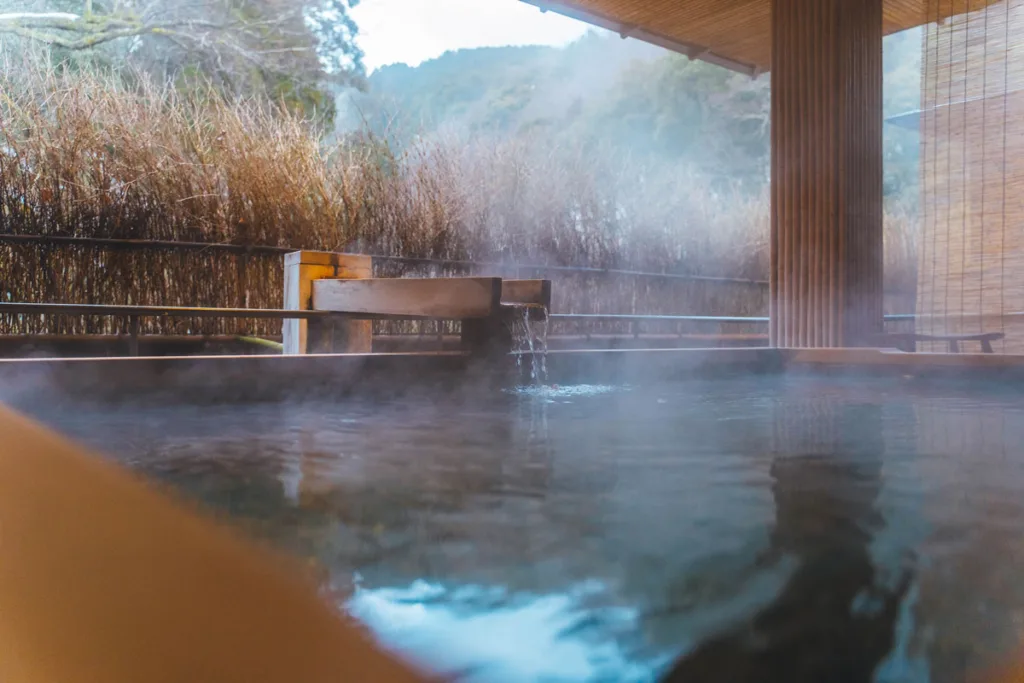
Essential Onsen Preparation and Wellness Products
Maximizing your traditional Japanese spa treatments experience requires proper preparation and quality wellness products. Additionally, bringing your own bath essentials ensures optimal skin care while respecting onsen traditions and environmental sustainability.
- Anker Portable Charger PowerCore 10000 – Essential for documenting your spa journey and staying connected
- Repel Travel Umbrella – Compact protection for outdoor onsen visits in any weather
- Natural Bamboo Bath Towel Set – Eco-friendly, quick-dry towels perfect for multiple daily spa sessions
- Organic Shampoo and Conditioner – Gentle cleansing for sensitive hot spring environments
- Travel-Size Moisturizer Set – Locks in mineral benefits for lasting skin health after spa treatments
Premier Onsen Destinations for Authentic Traditional Japanese Spa Treatments
Hakone Onsen: Located 90 minutes from Tokyo, Hakone offers diverse hot spring experiences. These include Tenzan Onsen with outdoor bamboo-surrounded pools and cave-like mineral baths. Furthermore, the volcanic geography creates multiple spring types, each providing unique therapeutic benefits for comprehensive wellness. Visitors can combine spa treatments with mountain adventures and scenic experiences.
Kusatsu Onsen: Famous throughout Japan for acidic healing waters and traditional yumomi water-cooling ceremonies. Additionally, Kusatsu features the iconic Yubatake hot spring field surrounded by historic Japanese architecture. The high mineral content makes these among Japan’s most therapeutically powerful traditional spa treatments.
Beppu Onsen: Kyushu’s premier spa destination boasts Japan’s highest concentration of hot springs. Moreover, it features unique experiences like therapeutic mud baths and volcanic sand therapy. Beppu Onsen Hoyoland offers specialized pools including rose-scented and medicinal herb-infused waters for targeted wellness benefits.

Yuzu Bath: Citrus-Infused Healing Therapy
Yuzu bath citrus aromatherapy represents one of Japan’s most beloved traditional spa treatments. It features aromatic citrus fruit that releases therapeutic essential oils when combined with hot water. Furthermore, this centuries-old practice provides immune system support through high vitamin C content. Additionally, it delivers profound aromatherapy benefits for stress relief and mental clarity.
The therapeutic benefits of yuzu baths include enhanced immune function, improved skin moisture and texture, and reduced inflammation. Moreover, they provide stress relief through natural aromatherapy and seasonal wellness support during winter months. The natural citrus oils also provide gentle exfoliation and skin brightening effects.
Premier Yuzu Bath Experiences
Arima Onsen, Kobe: One of Japan’s oldest hot spring destinations. Consequently, Arima Onsen combines yuzu bath treatments with over 1,300 years of wellness tradition. The mineral-rich waters enhance yuzu’s therapeutic properties for comprehensive healing experiences. Visitors can explore nearby Kobe attractions and cultural sites.
Ryokan Kurashiki, Okayama: This traditional Japanese inn offers authentic yuzu bath experiences using fresh seasonal fruit. Furthermore, the combination of historic ambiance and therapeutic treatments provides immersive onsen wellness experiences.
Yamanashi Prefecture Onsen: Mountain hot springs surrounded by pristine natural beauty offer yuzu baths with stunning seasonal views. Additionally, this combines visual therapy with aromatic healing for complete wellness restoration.
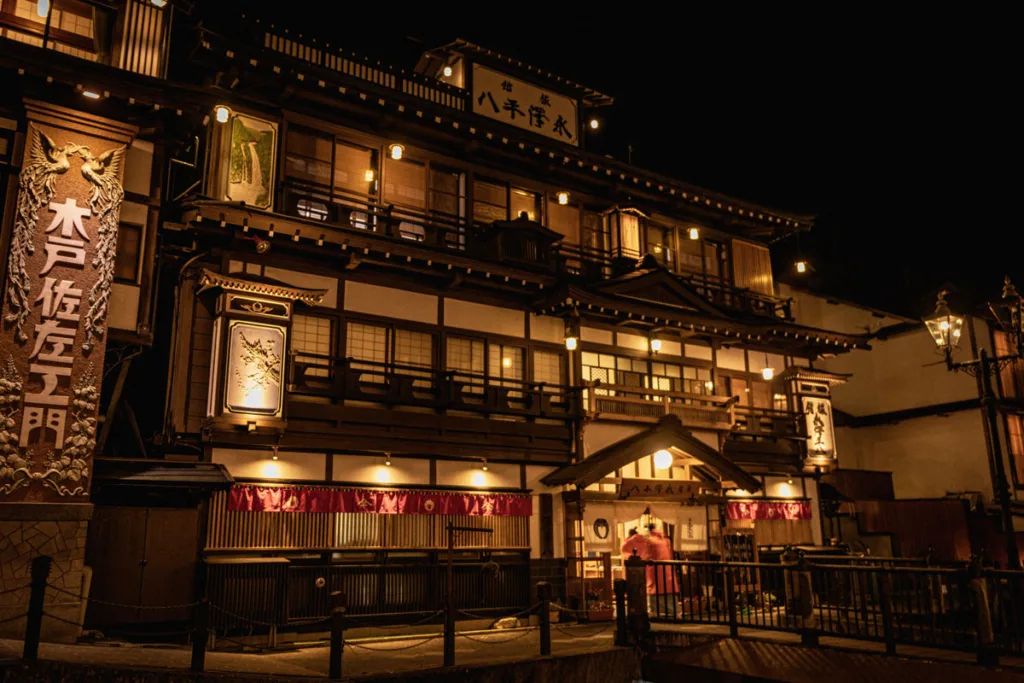
Sake Bath: Antioxidant-Rich Beauty Therapy
Sake bath antioxidant therapy represents a unique traditional Japanese spa treatment utilizing fermented rice wine. This wine is renowned for its antioxidant and amino acid content. Furthermore, this ancient beauty practice, dating back centuries, provides skin rejuvenation, detoxification, and relaxation benefits. These benefits come through the natural fermentation compounds found in premium Japanese sake.
The therapeutic benefits include improved skin texture and brightness and anti-aging effects from antioxidants. Additionally, they provide deep skin hydration from amino acids, gentle detoxification, and enhanced circulation. Regular sake bath treatments can help achieve the smooth, radiant skin traditionally associated with Japanese beauty ideals.

Authentic Sake Bath Destinations
Gero Onsen, Gifu: Renowned as one of Japan’s three most famous hot springs. Additionally, Gero Onsen offers premium sake bath experiences using local brewery partnerships. The combination of natural spring minerals and sake provides enhanced therapeutic benefits.
Hakone Kowakien Yunessun, Kanagawa: This innovative hot spring theme park features sake pools alongside traditional treatments. Furthermore, it offers both authentic and creative approaches to traditional Japanese spa treatments.
Shirahone Onsen, Nagano: Located in the Japanese Alps, this mountain resort provides sake baths using premium local sake. Moreover, it combines high-altitude wellness with traditional therapy in stunning natural surroundings.
Ganban-yoku: Heated Stone Therapy for Deep Healing
Ganban-yoku heated stone therapy, literally meaning “stone bed,” represents a distinctive traditional Japanese spa treatment. It involves heated black silica stone therapy. Furthermore, this ancient practice uses infrared radiation therapy and mineral absorption to promote deep detoxification. Additionally, it improves circulation and immune system enhancement through prolonged exposure to therapeutic stone energy.
The unique benefits of ganban-yoku include stimulated blood circulation, boosted immune function, and opened pores for toxin elimination. Moreover, they provide improved skin appearance and glow, mental clarity and stress reduction, and enhanced natural healing processes. The infrared radiation penetrates deeper than traditional heat therapy for comprehensive wellness benefits.
Premier Ganban-yoku Facilities
Spa LaQua, Tokyo: Tokyo’s premier urban wellness destination offers private ganban-yoku rooms with various stone bed options. Additionally, the facility combines traditional therapy with modern amenities for comprehensive onsen wellness. Visitors can explore nearby Tokyo cultural attractions.
Kusatsu Onsen Resort: This famous hot spring destination integrates ganban-yoku with natural onsen therapy for enhanced healing benefits. Furthermore, the high-acidity springs complement stone therapy for powerful detoxification.
Hakone Yuryo: Set in scenic Hakone, this resort offers ganban-yoku treatments with mountain views and fresh air. Moreover, it combines natural beauty with therapeutic stone healing for complete restoration.
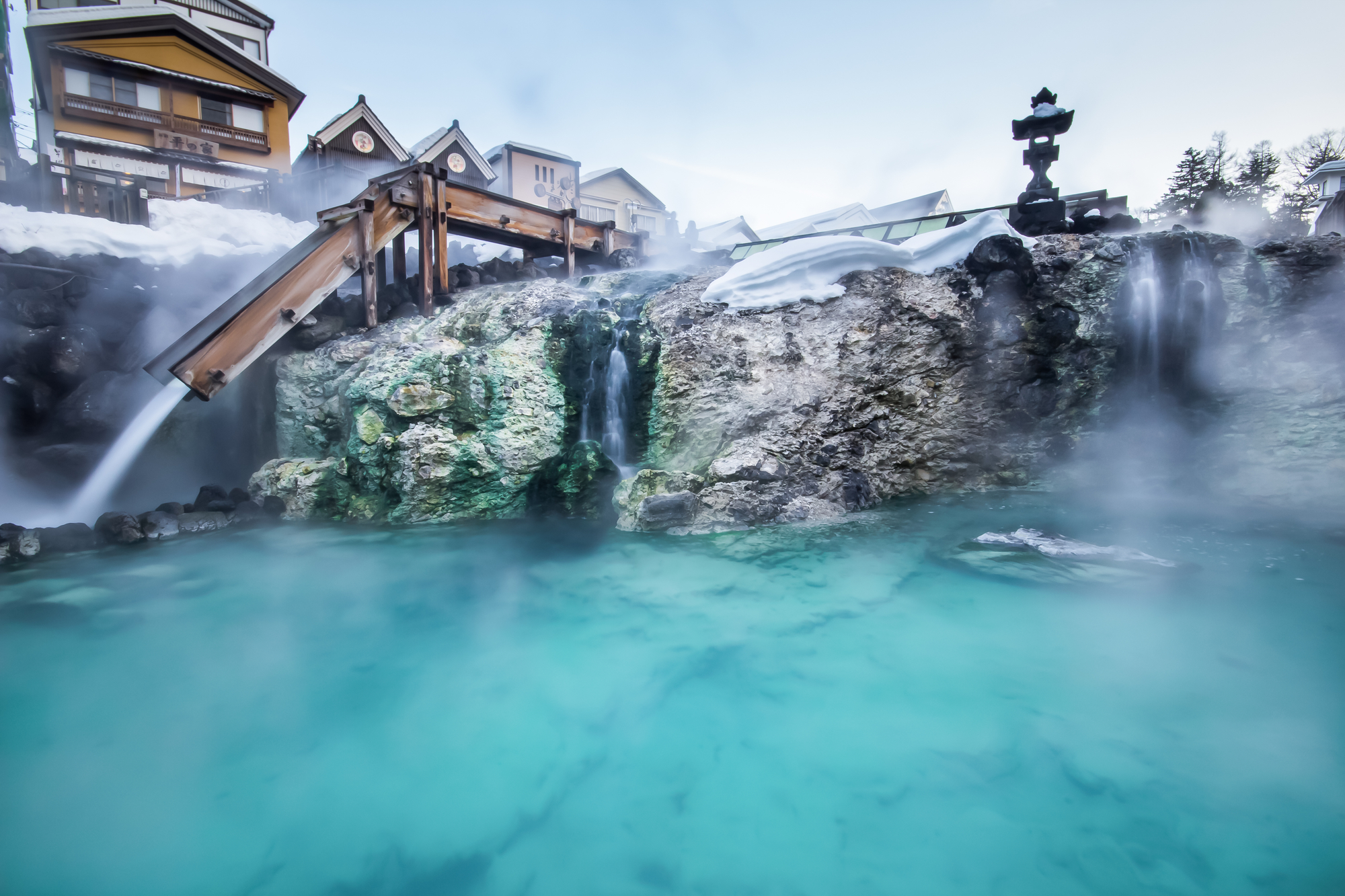
Traditional Japanese Massage: Shiatsu and Anma for Complete Onsen Wellness
Shiatsu: Pressure Point Therapy for Holistic Wellness
Shiatsu pressure point therapy represents one of Japan’s most scientifically validated traditional spa treatments. It utilizes finger pressure on specific meridian points to restore energy flow and promote natural healing. Additionally, often called “acupuncture without needles,” shiatsu therapy combines ancient Chinese medicine principles with Japanese refinement. This provides comprehensive therapeutic benefits.
The therapeutic effects of shiatsu include stress and anxiety reduction, improved circulation and lymphatic drainage, and pain relief for chronic conditions. Furthermore, they provide enhanced flexibility and range of motion, boosted immune system function, and improved sleep quality. Regular shiatsu sessions can address both acute symptoms and long-term wellness goals.
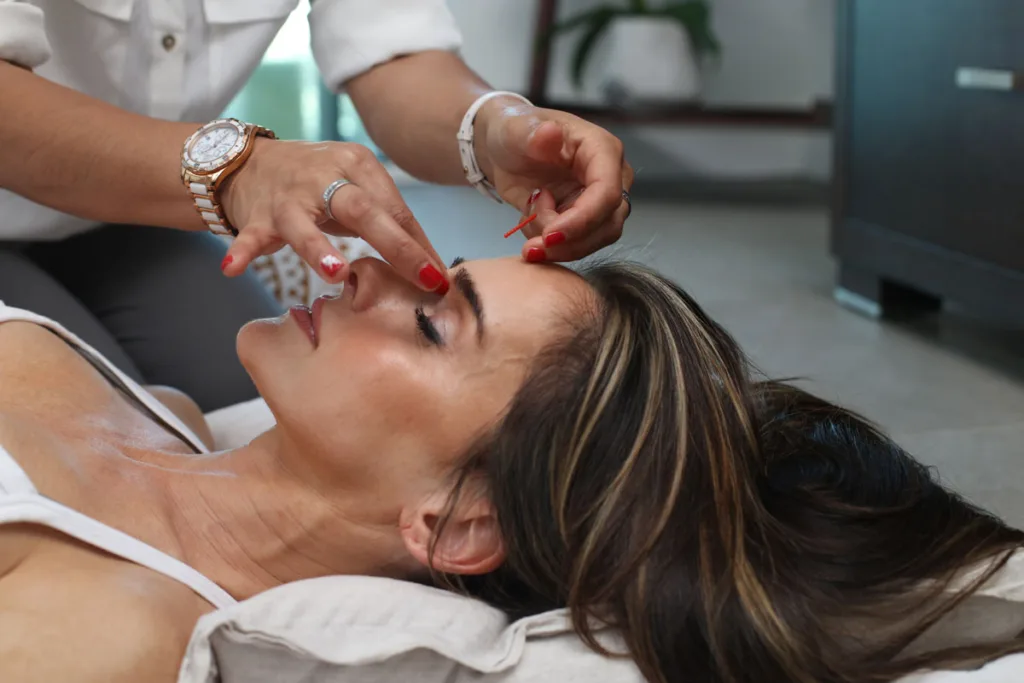
Exceptional Shiatsu Therapy Destinations
Arai Ryokan, Ishikawa: This luxury traditional inn in Komatsu offers master-level shiatsu therapy. Additionally, it combines stretching, pressure, and manipulation techniques. The serene mountain setting enhances therapeutic benefits for complete traditional Japanese spa treatments.
Shionomaru Onsen, Kumamoto: This hot spring resort features resident shiatsu masters providing personalized treatments in tranquil natural environments. Furthermore, the combination of onsen therapy and shiatsu creates synergistic healing effects.
Yumura Onsen, Hyogo: Located in the mountains of Hyogo Prefecture, this historic hot spring town offers traditional inn accommodations with expert shiatsu services. Moreover, this allows visitors to experience authentic traditional Japanese spa treatments in their original cultural context. Guests can also explore traditional Japanese garden designs for complete cultural immersion.
Anma: Ancient Therapeutic Massage for Energy Restoration
Anma massage represents Japan’s oldest traditional spa treatment technique. It has been practiced for over 1,000 years as a comprehensive therapy for physical and energetic healing. Additionally, this sophisticated massage system uses kneading, pressing, and stretching techniques to promote energy flow throughout the body. Furthermore, it addresses specific tension patterns and pain conditions.
The unique benefits of anma include targeted relief for chronic tension areas, improved circulation and energy flow, and enhanced immune system function. Moreover, they provide deep relaxation and stress relief, increased flexibility and mobility, and balanced mental and emotional states. Anma practitioners undergo extensive training to master the subtle techniques required for effective therapy.
Modern anma practitioners combine traditional techniques with contemporary understanding of anatomy and physiology. Additionally, this creates personalized treatments that address individual health concerns. Furthermore, it honors the ancient principles of energy balance and natural healing. Visitors interested in traditional healing arts can explore Japanese martial arts philosophies that share similar energy principles.
Scientific Benefits of Traditional Japanese Spa Treatments
Proven Therapeutic Effects
Modern research confirms the therapeutic benefits of traditional Japanese spa treatments. Additionally, studies published in the Journal of Rheumatology demonstrate significant pain reduction and improved quality of life for participants using hot spring therapy. The mineral content of onsen waters provides measurable health benefits including improved circulation, reduced inflammation, and enhanced immune function.
Scientific analysis reveals that traditional Japanese spa treatments work through multiple mechanisms. Furthermore, thermal therapy increases blood flow and oxygen delivery, mineral absorption provides essential nutrients for cellular function. Additionally, buoyancy reduces joint stress and muscle tension, and the meditative environment promotes stress hormone reduction and mental clarity.
Optimal Usage Guidelines for Maximum Benefits
Research-based recommendations for traditional Japanese spa treatments include beginning with shorter sessions (3-10 minutes) for newcomers. Additionally, they suggest gradually increasing duration to 10-20 minutes for experienced users. Furthermore, maintaining water temperatures of 42°C or higher provides alertness benefits, and using lower temperatures enhances relaxation and sleep.
Safety considerations include medical consultation for individuals with cardiovascular conditions and proper hydration before and after treatments. Moreover, they require thorough cleansing before entering onsen waters and respecting traditional etiquette for cultural authenticity and safety.
Traditional Japanese Spa Treatments: Complete Wellness Planning
Seasonal Wellness Experiences
Traditional Japanese spa treatments align with seasonal wellness principles. Additionally, they offer different benefits throughout the year. Spring treatments focus on detoxification and renewal, summer sessions emphasize cooling and hydration. Furthermore, autumn therapies support immune system preparation, and winter treatments provide deep warming and nourishment.
Planning authentic traditional Japanese spa treatments requires understanding regional specialties, seasonal availability, and cultural customs. Additionally, many facilities offer multi-day wellness programs combining various therapies. These provide comprehensive healing experiences that honor traditional Japanese wellness philosophy. Visitors can enhance their experience by exploring seasonal natural beauty throughout Japan.
Integration with Modern Wellness
Contemporary traditional Japanese spa treatments successfully integrate ancient wisdom with modern health understanding. Furthermore, this creates evidence-based wellness programs that address current lifestyle challenges. Many facilities now offer specialized treatments for stress management, immune support, skin health, and chronic pain conditions. Additionally, these use traditional methods validated by scientific research.
The global popularity of traditional Japanese spa treatments reflects their proven effectiveness and cultural depth. Moreover, visitors seeking authentic experiences can find certified practitioners and traditional facilities throughout Japan. This ensures access to genuine therapeutic benefits and cultural immersion.
Conclusion: Embracing Traditional Japanese Spa Treatments for Lifelong Wellness
Traditional Japanese spa treatments offer a comprehensive approach to health and wellness. Additionally, they address physical, mental, and spiritual well-being through centuries-tested methods. From the mineral-rich healing waters of onsen to the precise therapeutic techniques of shiatsu massage, these practices provide authentic pathways to restoration and vitality.
The enduring popularity of traditional Japanese spa treatments stems from their proven effectiveness, cultural depth, and adaptability to modern health needs. Furthermore, whether seeking relief from chronic conditions, stress management, skin health improvement, or spiritual renewal, these ancient practices offer accessible and effective solutions. Additionally, they are rooted in Japan’s remarkable wellness traditions.
For those interested in experiencing authentic traditional Japanese spa treatments, Japan offers countless opportunities to engage with these healing arts in their original cultural context. Moreover, from luxury resort destinations to historic mountain villages, visitors can discover the transformative power of Japan’s wellness wisdom. Furthermore, this contributes to the preservation of these invaluable cultural treasures.
The integration of traditional Japanese spa treatments into modern wellness routines provides sustainable approaches to health maintenance. Additionally, these honor both ancient wisdom and contemporary scientific understanding. As more people seek authentic, natural approaches to wellness, these time-tested practices continue to offer profound benefits. Furthermore, they serve individuals seeking optimal health and vitality in our modern world.
